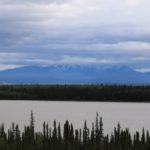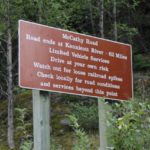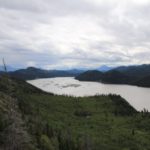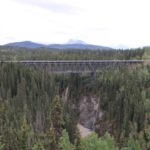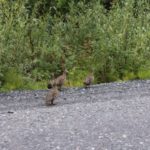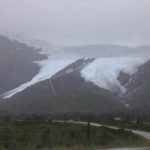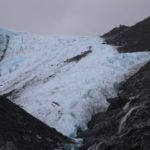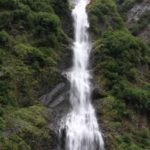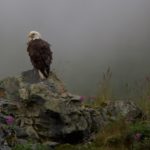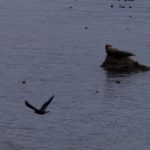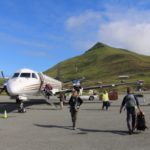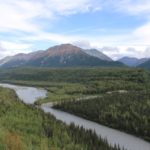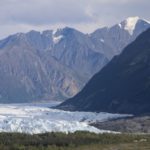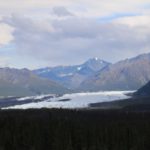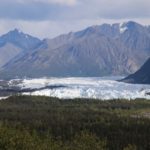7 August 2016.
Today I drive from Glenallen to Chitina. Chitina is the gateway to the Wrangell-St. Elias National Park. The park is enormous: the size of Switzerland or about several Yellowstones. It is also one of the coldest places on Earth. But is an amazing region, beautiful and remote. I barely scratch the surface as venturing into the park is an adventure on its own, and not something that could be attempted fully in a couple of days. One of the park guards tells me about a pilot who has been flying over the park for 20 years and reckons he only knows about a fifth of it.
After Chitina the highway becomes a gravel road. The park guard at Chitina suggests not to attempt it without a full-sized spare tire. The rental doesn’t have one (just a small tire version which they call a donut). Apparently the main risk of driving there is not potholes, but into the rusty rails that were left behind when they converted the old rail line into a road. Being there I cannot resist, and decide to drive anyway. I just need to get into the park itself. The weather looks foul, and after 15 miles I reach an old bridge crossing an enormous gorge. The Kuskulana Bridge was built in 1910 to allow trains to transport the mineral riches extracted from the Kennicott and McCarthy Mines, sixty miles from Chitina. It takes me a long time to get to the bridge as the roads are rough, and I am wary of not puncturing a tire. Along the way I see a red fox, an eagle, and some ptarmigans. The place is amazing!
But instead of camping in the Park, I decide to aim for Valdez where I need to catch a ferry on the 9th.
On the road I see a very terrible accident that happened just ahead of me. I see a cloud of smoke raise in the curve ahead, and as I turn, I see the crash between an RV and a tourist bus. The RV is in the middle of the road, but the bus has gone on to smash on a hill on the roadside. People are badly hurt and I stop to help. Some people are jumping out of the windows of the bus. The RV has the front destroyed and the people there are still trapped inside. A dog in the front seat howls. It makes me terribly sad but I cannot do much. The police arrive soon after and I leave. I thinkk of the poor people and their families that are ending their Alaskan trip in such a way. I’m sorry for them.
I continue driving towards Valdez, and in the evening I see Whorthington glacier and approach it to almost touch it. The glacier is dreary in the cold rain, yet beautiful. The ice of a glacier seems to always shine of a special blue colour. Then I drive through Thompson Pass, and can almost see the peaks of the mountains behind the thick fog and cloud. In Valdez, the city has been completely covered with fog. But now and then I glimpse the Valdez glacier and the amazing mountains. It is rainy and cold. And for the second day I have not seen any monkeyflowers. As this bleak day ends, I set up my camp near the glacier.
